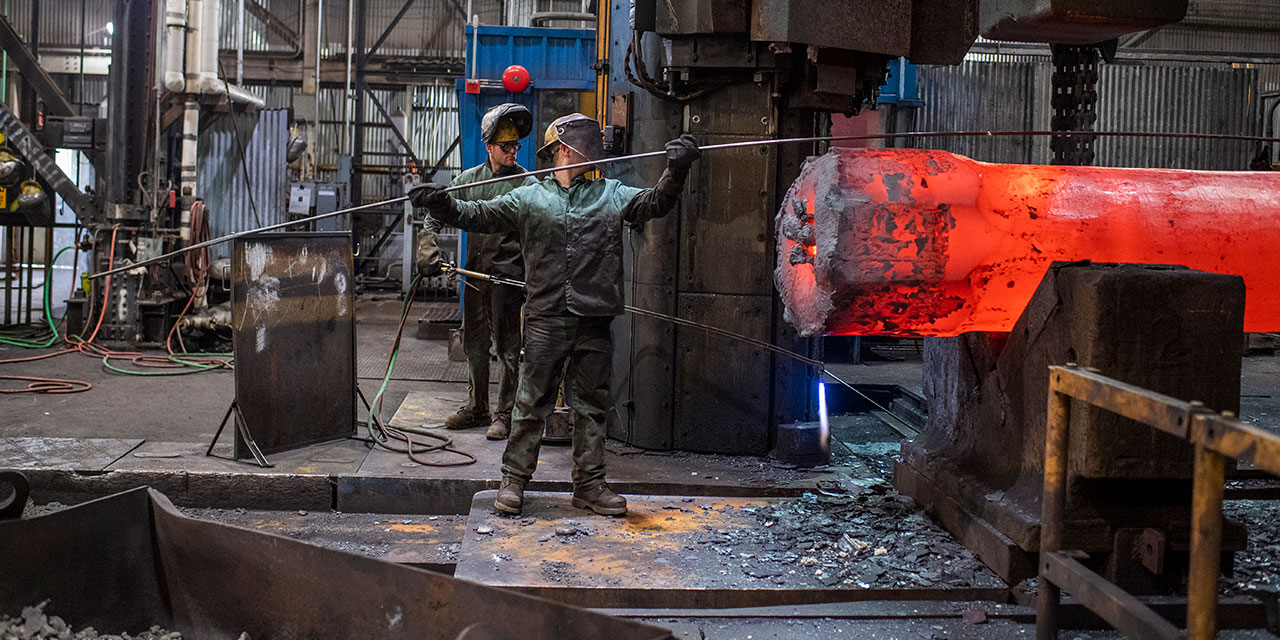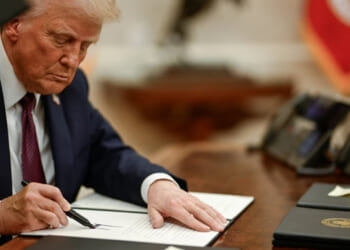
President Trump has said that “tariff” is the most beautiful word in the dictionary. On Liberation Day, April 2, he lived up to that encomium, imposing 10 percent tariffs on all imports and extra duties and tariffs on dozens of other countries. With tariffs higher than 100 percent in some sectors, these duties represent the largest protectionist shift in more than a century.
Trump has promised to use tariffs as the cornerstone of a rebuilt American manufacturing sector. He concedes that there will be “some pain” as global trade dynamics adjust to the new reality but promised that a restructured American economy would be a “very beautiful thing” in the end.
Finally, a reason to check your email.
Sign up for our free newsletter today.
We’re more likely to be left with economic instability than industrial revival. After Liberation Day, many observers—including Trump himself—anticipated higher prices. Consumer confidence has hit a 12-year low, inflation projections are at a 30-year high, the stock market has been swinging like a pendulum as Trump’s tariff policy changes by the day, numerous countries have threatened retaliation, and general business conditions have dropped to their second-lowest reading in more than two decades.
All of this volatility poses major problems. Reshoring is a complex, long-term endeavor that requires substantial investment and planning, often spanning several years. William Oplinger, CEO of aluminum producer Alcoa, explained that the time horizon for decisions about manufacturing is “20 to 40 years.” Manufacturers care more about what the tariff rate is likely to be in 2035 than in 2025.
Trump’s tariffs are imposed largely by executive order, which can change day-to-day. It can take years to build a new manufacturing plant in response to a tariff. No manufacturing or tech firm CEO in his right mind would risk sinking billions of dollars and years of labor to reorient supply chains in response to tariffs that can be revoked by the next president, or even by Trump himself. And Trump’s tariff flip-flopping is not encouraging them.
True, some American manufacturers are increasing domestic production in response to changing market dynamics. But these efforts so far fall short of the substantial investments required for full-scale reshoring. Neither economists nor manufacturers are confident that the tariffs alone will bring a sustained resurgence in American manufacturing.
Many companies, moreover, are opting to “wait and see.” Most of the firms that cannot internalize the higher costs of production resulting from tariffs will impose those costs on consumers. Others may seek to exclude the U.S. from their operations entirely. We’re more likely to be left with a global recession, economic inefficiencies, and a higher cost of living on an already strained middle class than any meaningful revival in American manufacturing.
All of this helps explain why past tariff efforts at reshoring have failed. Trump’s steel and aluminum tariffs in 2018 resulted in a small, temporary uptick in domestic iron and steel employment and production. But industries that rely on steel outnumber steel producers 80 to one. Those brief, modest gains were therefore outweighed by the loss of 75,000 jobs in steel- and aluminum-using sectors. The net result was an overall loss of 245,000 American jobs—due to higher import prices, stalled manufacturing, retaliatory tariffs, and stifled economic growth that left American taxpayers worse off than before.
As the economist Milton Friedman pointed out, politicians can easily point to specific groups helped by tariffs—for example, American rust belt manufacturing workers who keep their jobs. But the thousands of jobs never created as a result of the higher production costs created by input tariffs are less visible, and the unintended consequences of their absence reverberate throughout the economy.
Trump’s goal of using tariffs as a bargaining chip to secure better trade deals and political objectives is classic Art of the Deal maneuvering. But bringing jobs back to American shores is incompatible with his tariff policies. If Trump truly hopes to usher in a manufacturing renaissance, this isn’t the way to do it.
Photo By Tom Williams/CQ-Roll Call, Inc via Getty Images
City Journal is a publication of the Manhattan Institute for Policy Research (MI), a leading free-market think tank. Are you interested in supporting the magazine? As a 501(c)(3) nonprofit, donations in support of MI and City Journal are fully tax-deductible as provided by law (EIN #13-2912529).
Source link
















